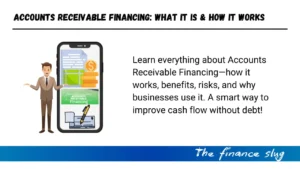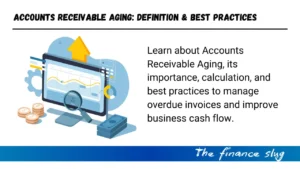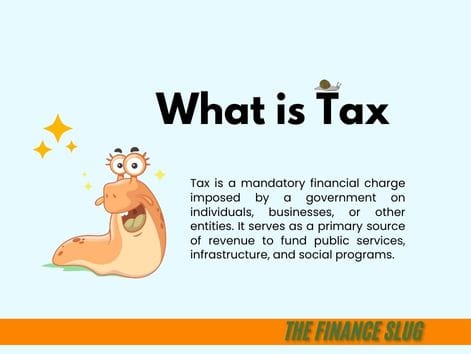In the world of finance and investing, abnormal return is a crucial concept that helps investors evaluate how an asset has performed relative to expectations. The performance of an asset, such as a stock or bond, is often assessed against an anticipated return, which is typically based on a financial statement/model or market benchmark. When the actual return of an asset differs from its expected return, it is referred to as abnormal return.
Abnormal return is not only a tool to measure an asset’s performance but also a metric that reveals how external events, investor sentiment, and market dynamics impact prices. Understanding abnormal return helps investors make informed decisions about their investments, optimize their strategies, and even identify market inefficiencies. This article will delve deeper into abnormal return, its history, calculation methods, and practical applications.
The History of Abnormal Return
The concept of abnormal return dates back to the mid-20th century, when financial markets began adopting more systematic and quantitative approaches to analysis. Before this, investors relied largely on intuition, fundamental analysis, and news reports. However, as markets became more complex, it became essential to quantify performance in a way that could objectively measure deviations from expectations.
In the 1960s, the introduction of the Capital Asset Pricing Model (CAPM) by William Sharpe and others provided a framework for calculating an asset’s expected return based on its risk and market conditions. CAPM assumes that the return on an asset is determined by a risk-free rate, a risk premium based on the asset’s beta (its volatility relative to the overall market), and the expected market return.
With CAPM and similar models, investors could now calculate what the “normal” or expected return of an asset should be. From this point, researchers and practitioners began to recognize the significance of abnormal return. If the asset’s actual return differed from the expected return, this difference became a key signal of the asset’s performance, efficiency, and other influencing factors.
In the 1970s, researchers developed the methodology of event studies, which analyzed how specific events—such as earnings announcements, mergers, or regulatory changes—affected asset prices. Abnormal return was crucial in these studies as it measured how much the price deviated from expected behavior in response to an event.
Today, abnormal return continues to be a cornerstone of financial research, portfolio management, and performance evaluation. It serves as a benchmark to gauge the efficiency of markets and the success of investment strategies.
Understanding Abnormal Return
At its core, abnormal return is the difference between the actual return on an investment and the return that was expected based on a financial model or benchmark. Investors and analysts use abnormal return to assess the performance of individual assets, portfolios, and market behavior.
The formula for abnormal return is:
Abnormal Return = Actual Return – Expected Return
Where:
- Actual Return is the return generated by the asset over a specific period, including both price changes and any income (such as dividends or interest).
- Expected Return is the return an asset is predicted to generate, based on models like CAPM or historical performance data.
A positive abnormal return occurs when the asset’s actual return exceeds the expected return. For example, if a stock is expected to return 5% based on its risk profile and market conditions, but it delivers a 10% return, the positive abnormal return is 5%.
Conversely, a negative abnormal return occurs when the asset’s actual return falls short of expectations. For instance, if the same stock that was expected to return 5% ends up with only 2%, the negative abnormal return would be -3%.
Calculating Abnormal Return
The calculation of abnormal return begins with the determination of the expected return. The expected return can be derived using various models, but the most widely used is the Capital Asset Pricing Model (CAPM). The formula for expected return in CAPM is:
Expected Return = Risk-Free Rate + Beta × (Market Return – Risk-Free Rate)
Where:
- The Risk-Free Rate represents the return on a risk-free asset, such as government bonds.
- Beta measures the asset’s volatility relative to the overall market. A beta of 1 means the asset moves in line with the market, while a beta greater than 1 means it is more volatile.
- The Market Return is the return of the overall market, often represented by a broad index like the S&P 500.
Once you have the expected return, calculating abnormal return is simple. Subtract the expected return from the actual return achieved by the asset during the period of analysis. This will give you a positive or negative value, indicating the asset’s performance relative to expectations.
For example, let’s assume that the stock of a company has an expected return of 7% over the next year. If the stock actually generates an 11% return, the abnormal return would be:
Abnormal Return = 11% (Actual Return) – 7% (Expected Return) = 4%
In this case, the 4% abnormal return is considered positive, meaning the stock outperformed expectations.
Factors Influencing Abnormal Return
Several factors can influence abnormal return, making it a valuable metric for understanding asset behavior and market conditions. These factors include:
1. Market Events
Unexpected events such as economic recessions, political upheavals, or natural disasters can cause dramatic changes in asset prices. For instance, the COVID-19 pandemic led to widespread market disruptions, resulting in both positive and negative abnormal returns across different sectors.
2. Corporate Announcements
When companies release earnings reports, announce mergers and acquisitions, or disclose new product developments, these announcements can drive significant changes in stock prices. Positive news, such as higher-than-expected earnings, often leads to positive abnormal returns, while negative news can result in negative abnormal returns.
3. Investor Sentiment
Investor behavior, driven by emotions, news, or speculation, can significantly impact asset prices. Positive sentiment, driven by optimism about a company or industry, can lead to higher-than-expected returns, while negative sentiment, such as fear or uncertainty, can cause underperformance.
4. Regulatory and Policy Changes
Changes in government policy, such as tax reforms, monetary policy adjustments, or trade tariffs, can directly affect the performance of certain sectors or companies. For instance, a government subsidy to the renewable energy sector could result in positive abnormal returns for companies in that industry.
The Role of Abnormal Return in Finance
Abnormal return serves multiple purposes in finance and investing. It is an essential tool for evaluating investment performance, measuring the impact of market events, and identifying potential market inefficiencies.
1. Performance Measurement
Abnormal return is widely used to assess the performance of individual investments and portfolios. By comparing actual returns with expected returns, investors can determine whether their strategies have been successful. If a portfolio consistently generates positive abnormal returns, it suggests that the investment strategy is outperforming the market. Conversely, negative abnormal returns signal that the strategy needs to be adjusted.
2. Event Studies
Abnormal return plays a key role in event studies, where analysts analyze the impact of specific events (such as earnings announcements or mergers) on asset prices. By studying abnormal returns during the event period, analysts can assess the market’s reaction to the event and determine whether the market overreacted, underreacted, or efficiently incorporated the new information.
3. Identifying Market Inefficiencies
In efficient markets, asset prices should reflect all available information. However, abnormal returns can indicate inefficiencies in the market. If an asset consistently delivers positive abnormal returns, it may suggest that the market has underpriced it. Conversely, negative abnormal returns may indicate overvaluation or mispricing.
4. Risk Management
Abnormal return is also useful for risk management. By tracking abnormal returns, investors can identify assets that are underperforming and may need to be re-evaluated. For example, if an asset consistently generates negative abnormal returns, it may be a sign that the investment is too risky or that the market is not fully recognizing its value.
Real-World Example of Abnormal Return
Imagine a retail company that announces strong quarterly earnings, significantly exceeding analysts’ expectations. Before the announcement, analysts predicted the stock would increase by 5%. However, following the announcement, the stock jumps by 12%.
The abnormal return in this case is calculated as:
Abnormal Return = 12% (Actual Return) – 5% (Expected Return) = 7%
This 7% positive abnormal return indicates that the stock outperformed expectations due to the unexpected strength of the earnings report.
How to Use Abnormal Return in Investment Decisions
Abnormal return can be a valuable tool in refining investment strategies. By regularly evaluating abnormal returns, investors can assess whether their decisions are paying off. Positive abnormal returns suggest that their strategies are on track, while negative abnormal returns might indicate that it’s time to adjust their approach.
Challenges and Limitations of Abnormal Return
While abnormal return is a powerful tool, it does have some limitations. Calculating expected returns often involves assumptions, such as the use of financial models like CAPM, which may not fully capture real-world complexities. Additionally, abnormal returns can be influenced by short-term market volatility, which may not reflect the long-term value of an asset.
Another limitation is that abnormal return assumes market efficiency, which may not always be the case. In practice, markets can be influenced by factors such as investor sentiment or irrational behavior, making it difficult to accurately predict returns.
Conclusion
Abnormal return is a fundamental concept in finance that helps investors understand asset performance in relation to expectations. It plays a crucial role in performance evaluation, event studies, risk management, and market analysis. By examining abnormal returns, investors can gain valuable insights into market behavior and make more informed investment decisions.
Understanding abnormal return is essential for anyone looking to succeed in the world of investing. Whether you’re a seasoned investor or a newcomer, this concept can help guide your decisions and improve your overall financial strategy.
For more insights on abnormal return and other investment concepts, stay tuned for more articles and resources.
FAQ About Abnormal Return
What is the difference between abnormal return and regular return?
Abnormal return is the difference between actual return and expected return, while regular return simply refers to the return generated by an asset.
What does a positive abnormal return mean?
It means the asset outperformed its expected return, typically due to unforeseen favorable factors.
How do I calculate abnormal return?
Subtract the expected return from the actual return of an asset. The formula is:
Abnormal Return = Actual Return – Expected ReturnCan abnormal return be used for long-term strategies?
Yes, abnormal return can help identify whether long-term strategies are effective, though it’s more commonly used for short-term analysis.
Why is abnormal return important for investors?
It helps evaluate whether an investment strategy is successful, providing insights into performance and potential market inefficiencies.
Article Resources
- Stock Market Crash Today: A Bloodbath on Monday – What You Need to KnowPublished on financeslug.xyz The global financial markets are reeling from a massive sell-off, and Indian equity benchmark indices BSE Sensex and Nifty50 took a brutal… Read more: Stock Market Crash Today: A Bloodbath on Monday – What You Need to Know
- Wall Street Bonuses Reach Record $47.5 Billion in 2024, Up 34% from Previous YearWall Street’s bonus pool hit a record $47.5B in 2024, up 34% from 2023, marking the highest payout since 1987.
- How to Convert Delimited CSV Data into Columns in ExcelCSV (Comma-Separated Values) files are widely used for data exchange, but when opened in Excel, the data often appears in a single column instead of… Read more: How to Convert Delimited CSV Data into Columns in Excel
- Harvard University Announces Free Tuition for Families Earning $200K or LessHarvard’s New Tuition-Free Policy: What You Need to Know Harvard University has unveiled a groundbreaking initiative to make higher education more accessible. Starting from the… Read more: Harvard University Announces Free Tuition for Families Earning $200K or Less
- Eli Lilly’s 1.8B Dollar Investment in Weight Loss DrugsIreland’s Weight-Loss Drug Boom: A Game-Changer for Economy and Healthcare Ireland is witnessing a surge in pharmaceutical investments, thanks to the skyrocketing demand for weight-loss… Read more: Eli Lilly’s 1.8B Dollar Investment in Weight Loss Drugs
- Forever 21 Files for Bankruptcy Again: The End of an Era in Fast Fashion?Forever 21, once a staple in American malls and a leader in the fast-fashion industry, has filed for Chapter 11 bankruptcy for the second time.… Read more: Forever 21 Files for Bankruptcy Again: The End of an Era in Fast Fashion?
- Accredited Asset Management Specialist (AAMS): Everything You Need to KnowBoost your finance career with the Accredited Asset Management Specialist (AAMS) certification. Learn its benefits, cost & career scope today!
- What is Central Bank Digital Currency (CBDC)? Benefits, Risks & FutureLearn what Central Bank Digital Currency (CBDC) is, how it works, its benefits, risks, and its future in the global financial system.
- Accounts Receivable Financing: What It Is & How It WorksLearn how Accounts Receivable Financing boosts cash flow without debt. Discover benefits, risks, and how it works for businesses.
- Accounts Receivable Aging: Definition, Importance & Best PracticesDiscover Accounts Receivable Aging, its importance, calculation, and best practices to manage overdue invoices and boost cash flow.











